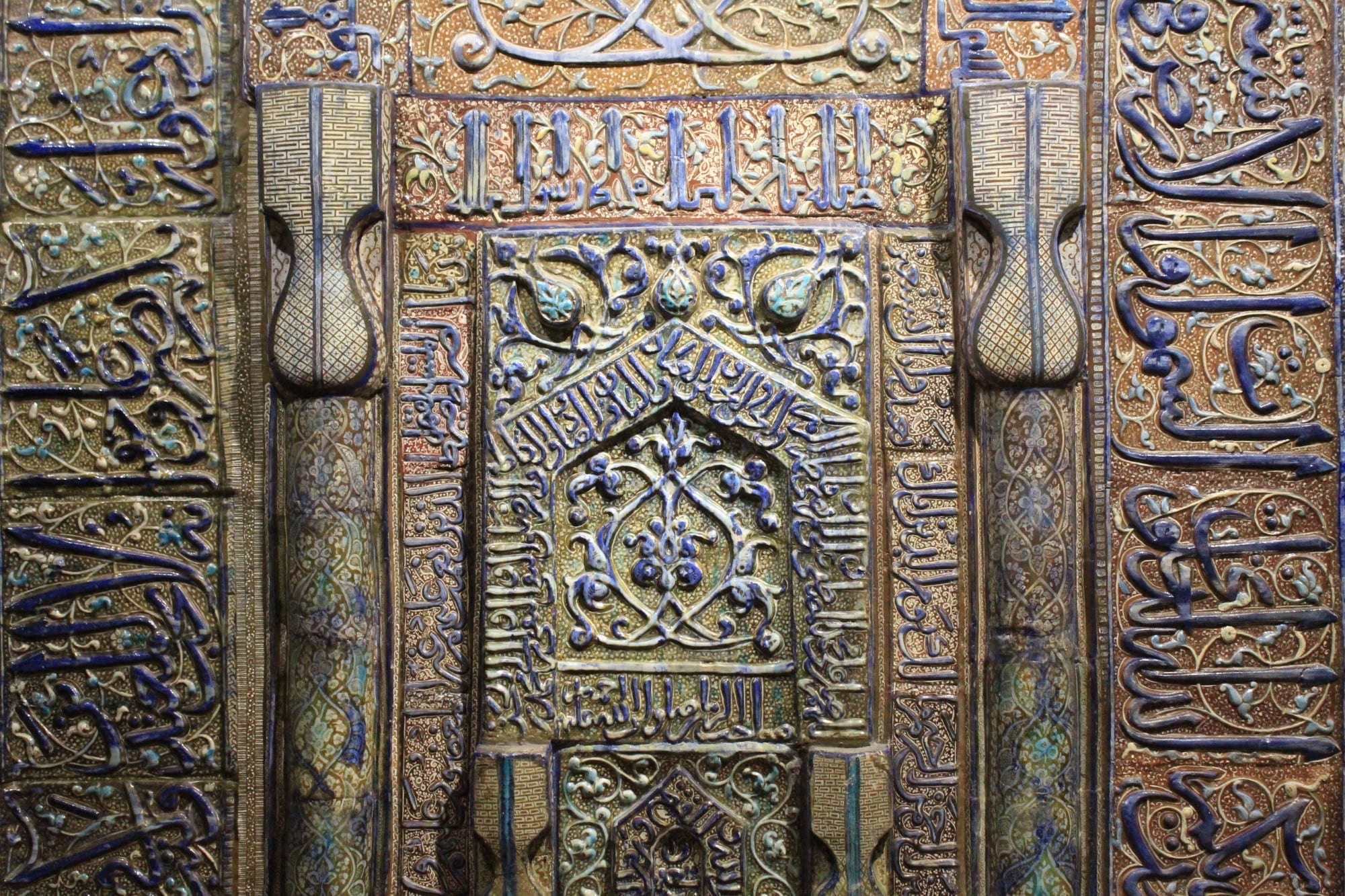
Mail-order Mihrabs: Kashan Tiles and Architectural Design in Iran, c. 1200-1330
Patricia Blessing, Art and Archaeology
November 17, 2020 · 12:00 pm · via Zoom
Program in Medieval Studies

Please join us for a Medieval Studies Colloquium presented by Professor Patricia Blessing.
The city of Kashan in Iran, an oasis located 240 km south of Tehran to the east of the desert of the Dasht-i Kavir, was a major center of ceramic production from the late twelfth to the mid-fourteenth century. One of the hallmarks of this production were luster tiles that were used to clad the dado zones and mihrabs of mosques and mausolea. These tiles were installed locations ranging from major Shi’a holy sites such as the shrine of Imam Reza in Mashhad in eastern Iran to smaller tombs as far as Azerbaijan. Yet despite more than a century of extensive research and publications about the luster industry of Kashan, two simple questions have not been asked: How were the tiles designed to fit the buildings, and how were they transported from Kashan to their destinations? This talk will pursue these questions, attending to issues of design practices, scale, transportation and logistics in medieval Iran.
Patricia Blessing is Assistant Professor of Islamic Art History in the Department of Art & Archaeology, specializing in the art and architecture of the Islamic world, with a focus on the eastern Mediterranean and Iran from the twelfth to the fifteenth centuries.















